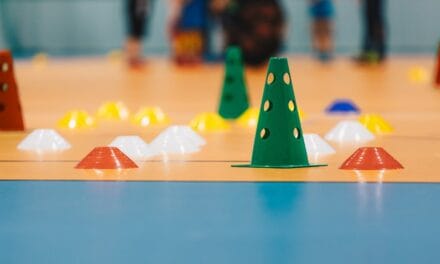Previously, we’ve looked at why so few girls take part in sport, here we consider what you can do to break down the barriers.
Encouraging girls to exercise more regularly will improve their overall wellbeing and there are some simple, practical ways that you can help.
Female role models
Representation matters: one of the reasons given by girls for not taking part in physical activity is a lack of role models. Flick through the sports pages of any newspaper or watch a sports channel on TV – female athletes simply aren’t as visible as their male counterparts.
If girls aren’t seeing people ‘like them’ participating in sport then they won’t be inspired to take it up.
This is changing – slowly. Recent successes by the England women’s cricket, football and rugby teams will surely help improve things further.
This doesn’t mean that female role models aren’t out there, though – you just have to look for them. British boxer Nicola Adams was the first woman ever to win an Olympic boxing title. She has since won the World Championships and turned professional.
Sarah Hunter is captain of the England Women’s Rugby team; you can read our fascinating interview with her.
Identifying some sporting ‘sheroes’ is an excellent way to show girls that sport – any sport – is for them. See our box on good Twitter accounts to follow for some ideas.
Disguise physical activity
Research shows that girls aren’t keen on organised sports and especially team activities. So try getting creative. You can ‘hide’ the physical aspect of an activity by taking students on a nature walk.
Walking is great exercise, especially for those who aren’t very fit, and you can concentrate on the nature aspect – teach the kids about wildlife and they won’t even know they’re exercising!
Incorporating non-traditional activities into class time is another good idea. Yoga, dance and gymnastics all provide fantastic health benefits, but without the competitive element of traditional team sports.
Dance is particularly visible with the popularity of Strictly Come Dancing and could lead to a career in performance or choreography.
Remove the stigma (and the sexism)
Another concern that girls express is that sport is seen as unfeminine. Venus and Serena Williams have been referred to the ‘Williams brothers’, while US basketball player Brittney Griner is often called ‘a man’. This is just a tiny example of the sexism that female athletes face, so it’s really no surprise that girls are put off.
The idea that sport isn’t for girls is extremely damaging, but it can be addressed. Women like Sarah Hunter really are breaking down the barriers to girls participating in sports, and using her and those like her as examples will show your students that such traditionally male-dominated team activities can be for them, too.
Encourage girls to participate and show them that such sports can be fun – try concentrating on working together as a team rather than competition between teams.
Conversely, give as much priority to less traditional activities and to sports that are seen as ‘girls’ sports’. Yoga and netball are just as important as football and rugby, and yet the former are often sidelined in preference for the latter. And get your male students involved in these activities, too!
Some Twitter accounts for girls to follow:
Women in Sport – @Womeninsport_uk
This Girl Can – @ThisGirlCanUK
Challenge Sophie – @challengesophie
Katie McDonnell – @katiemcdonnell
SportsWoman Online – @SportsWomanOnli
Nicola Adams – @NicolaAdamsOBE
Lionesses – @Lionesses
Clare Balding – @clarebalding
This is just a small selection; why not share some of your in our Comments section?
Rebecca has been a writer and editor for almost 20 years. She writes on a huge range of subjects, concentrating on sport, nature, mental health, and crafts.









